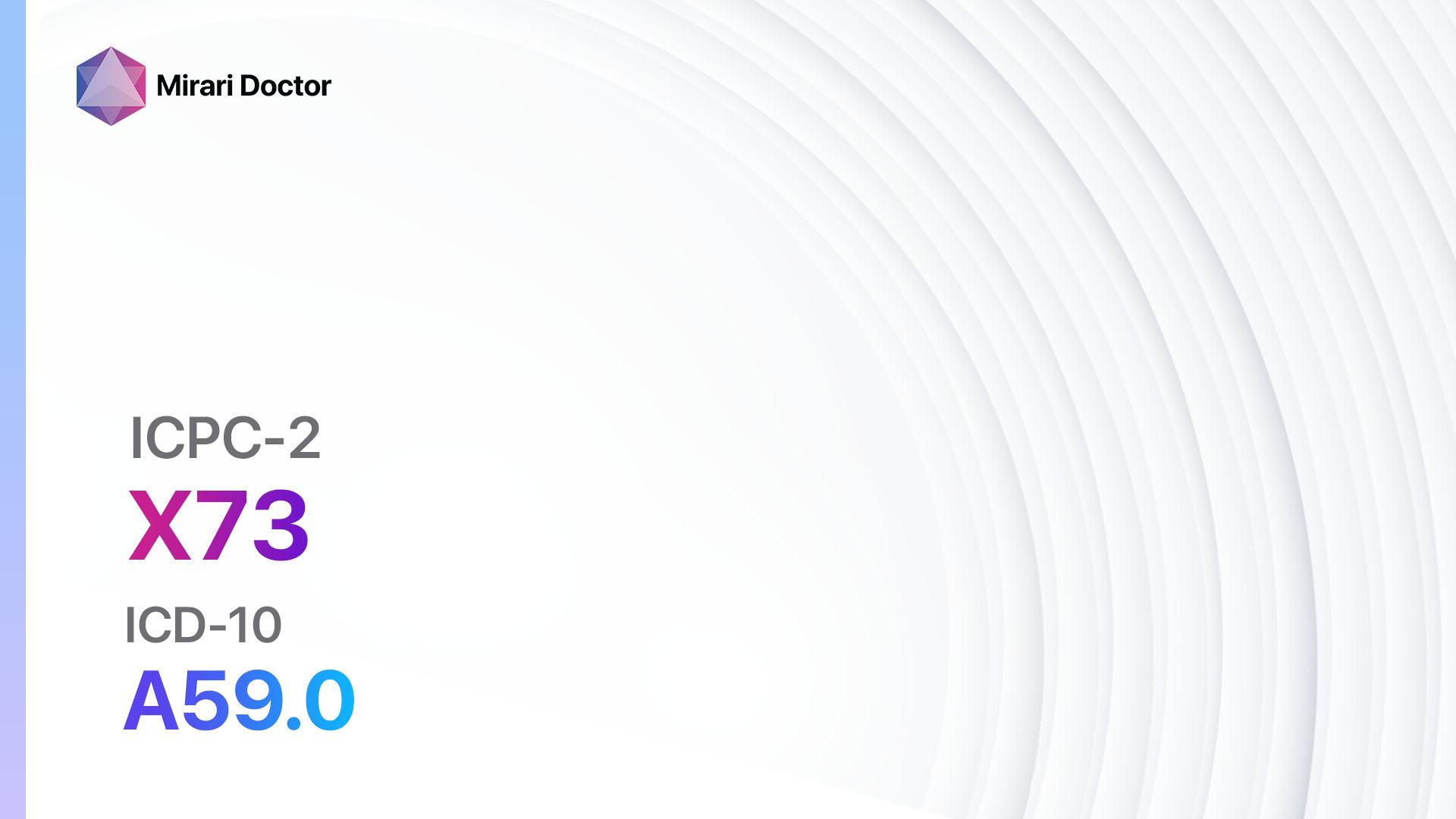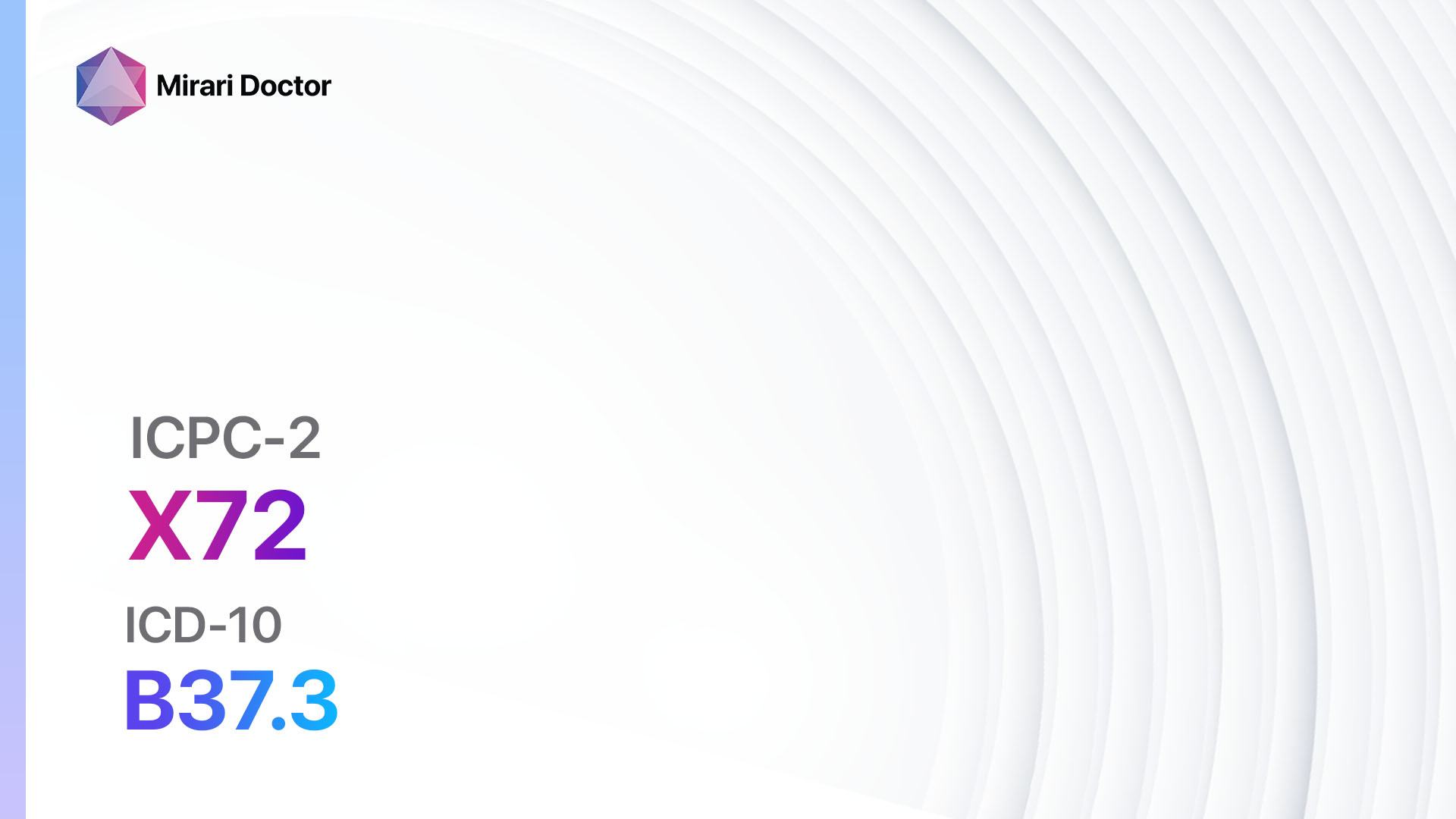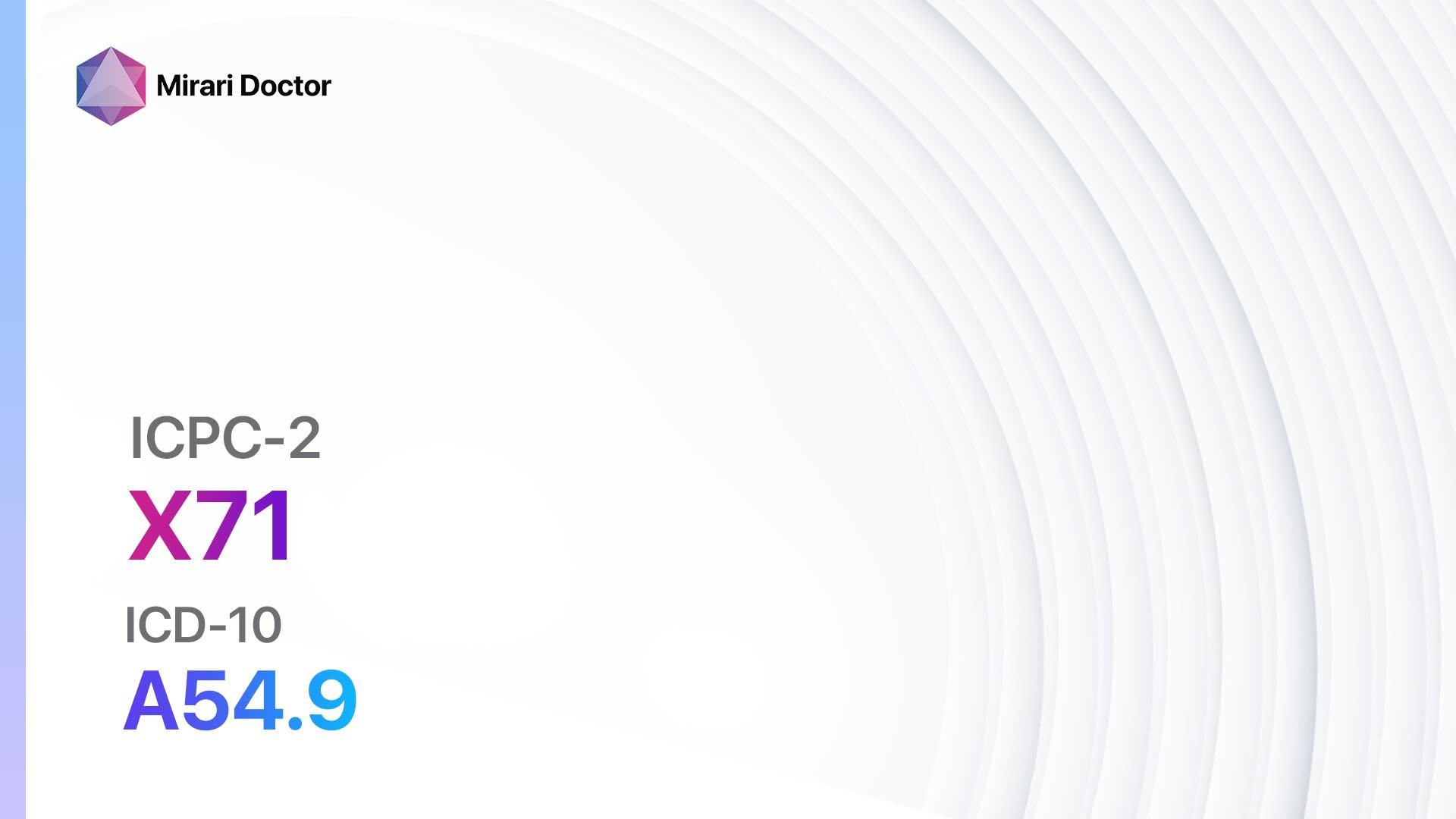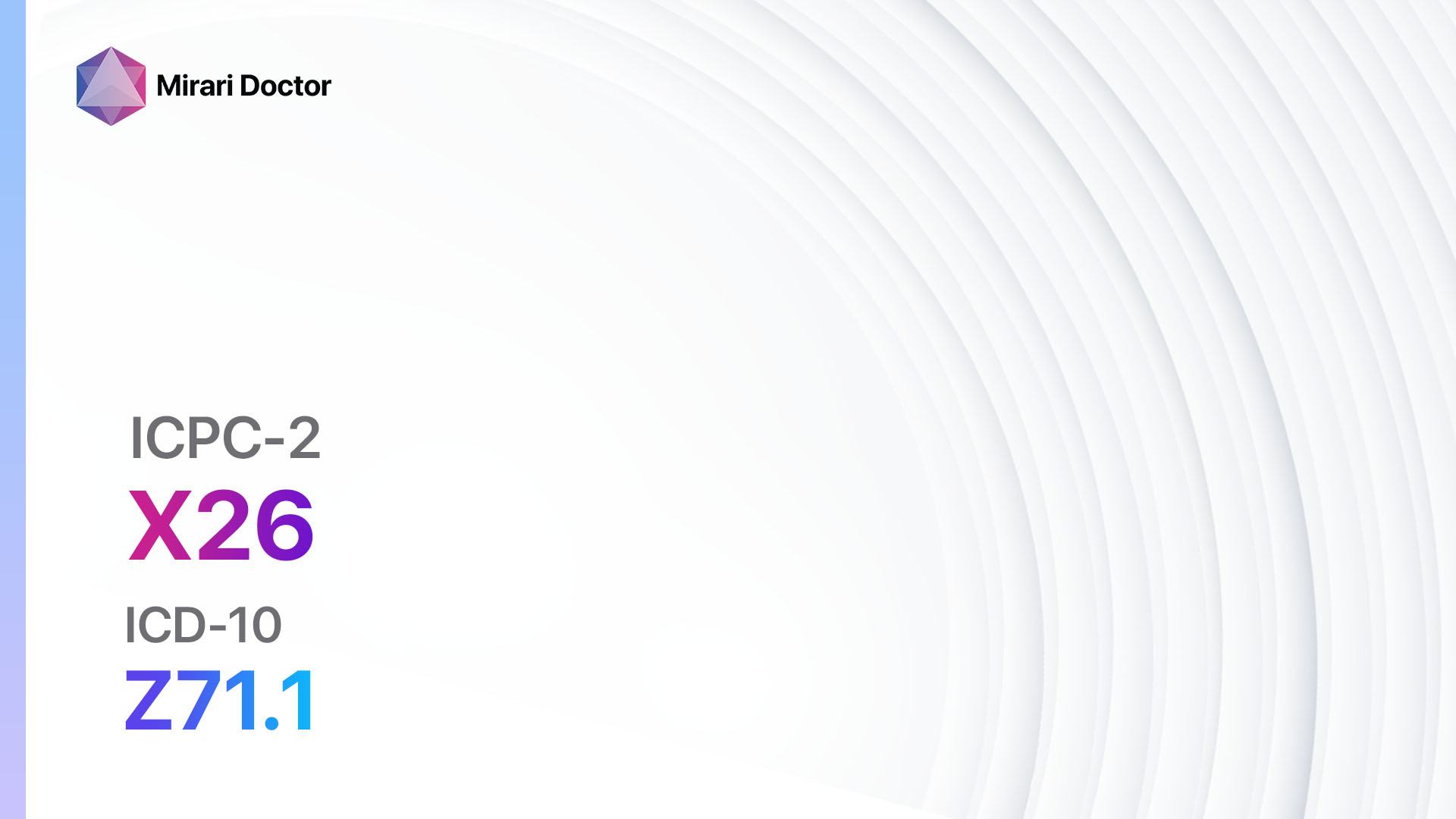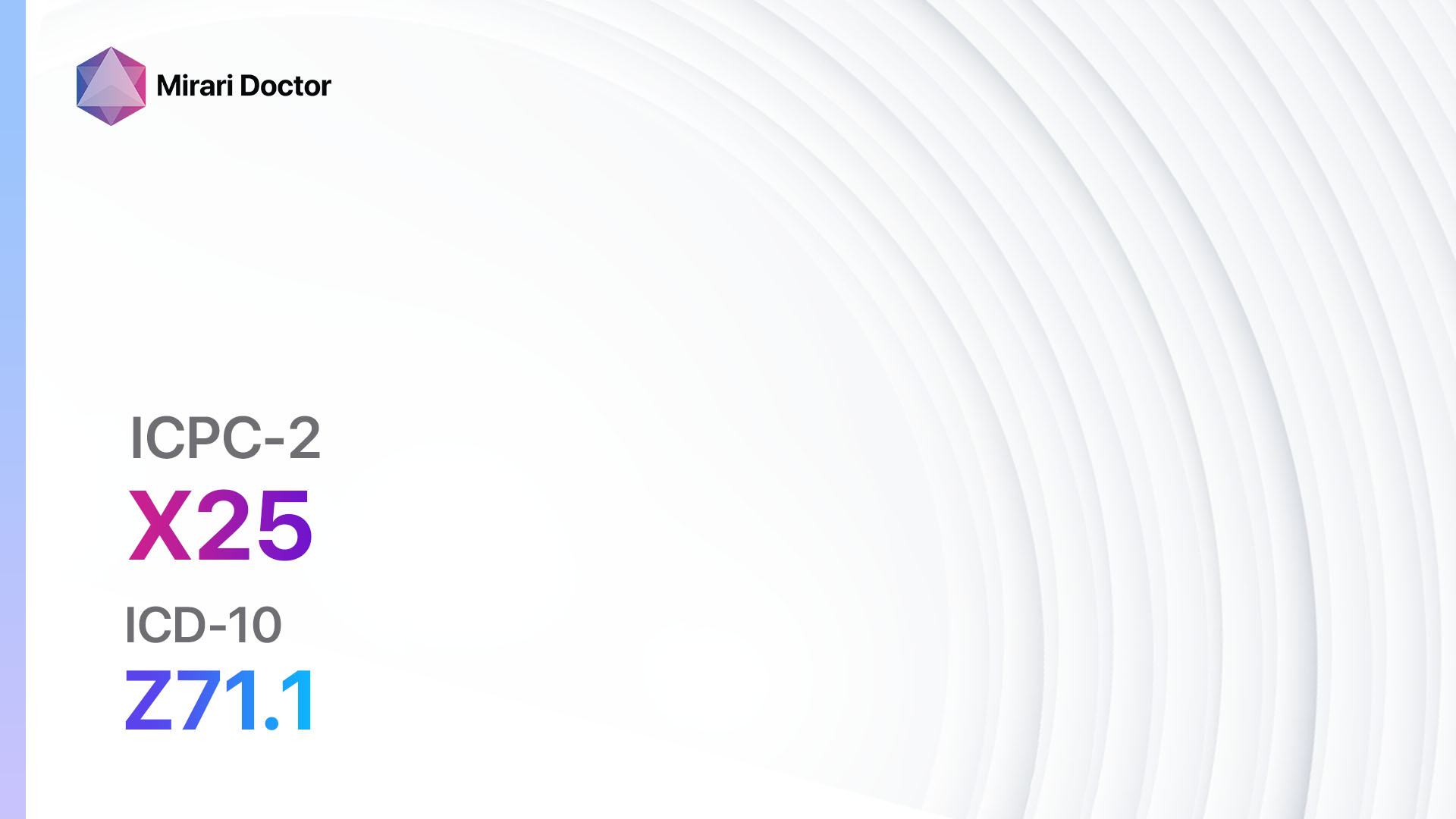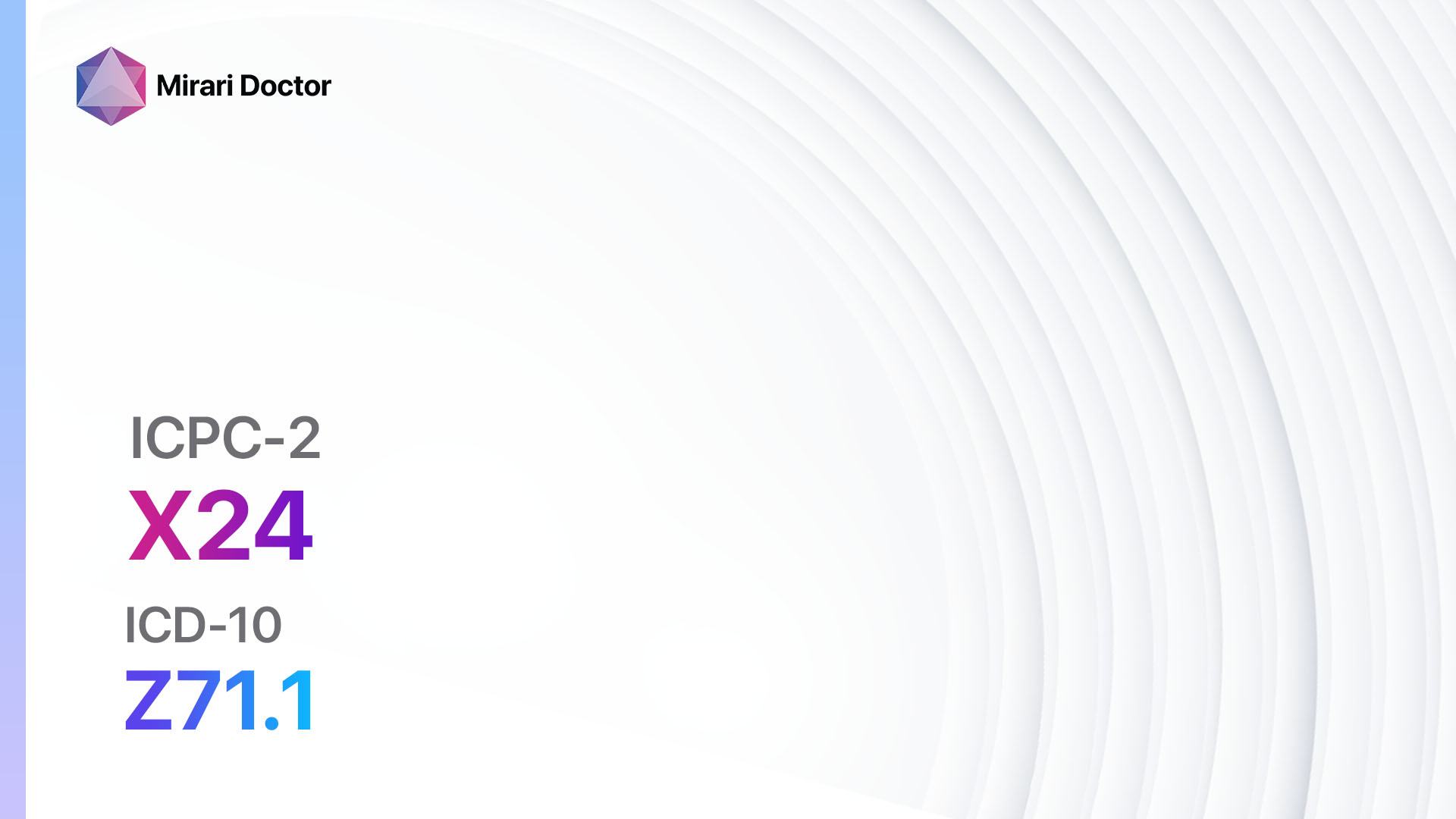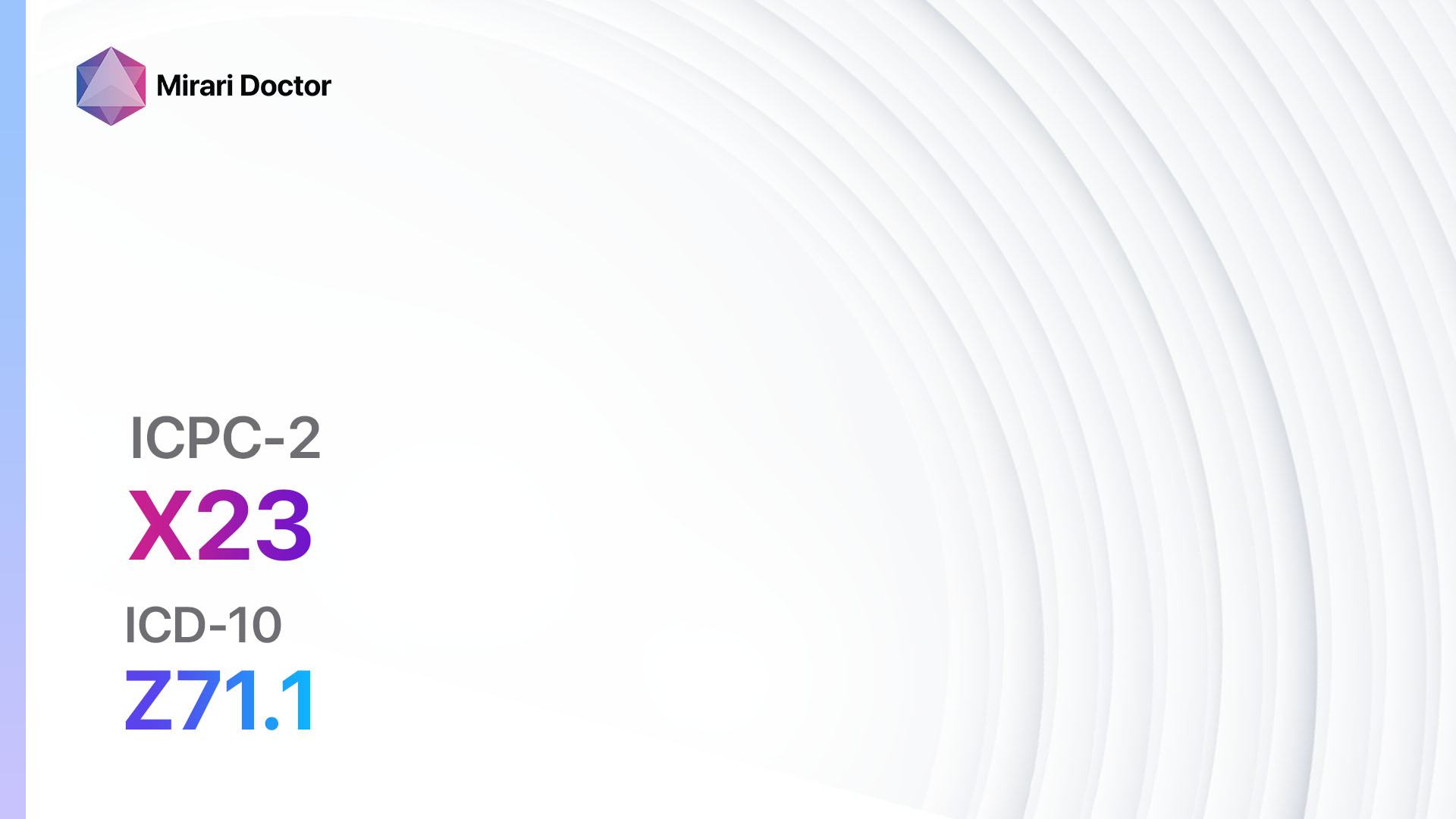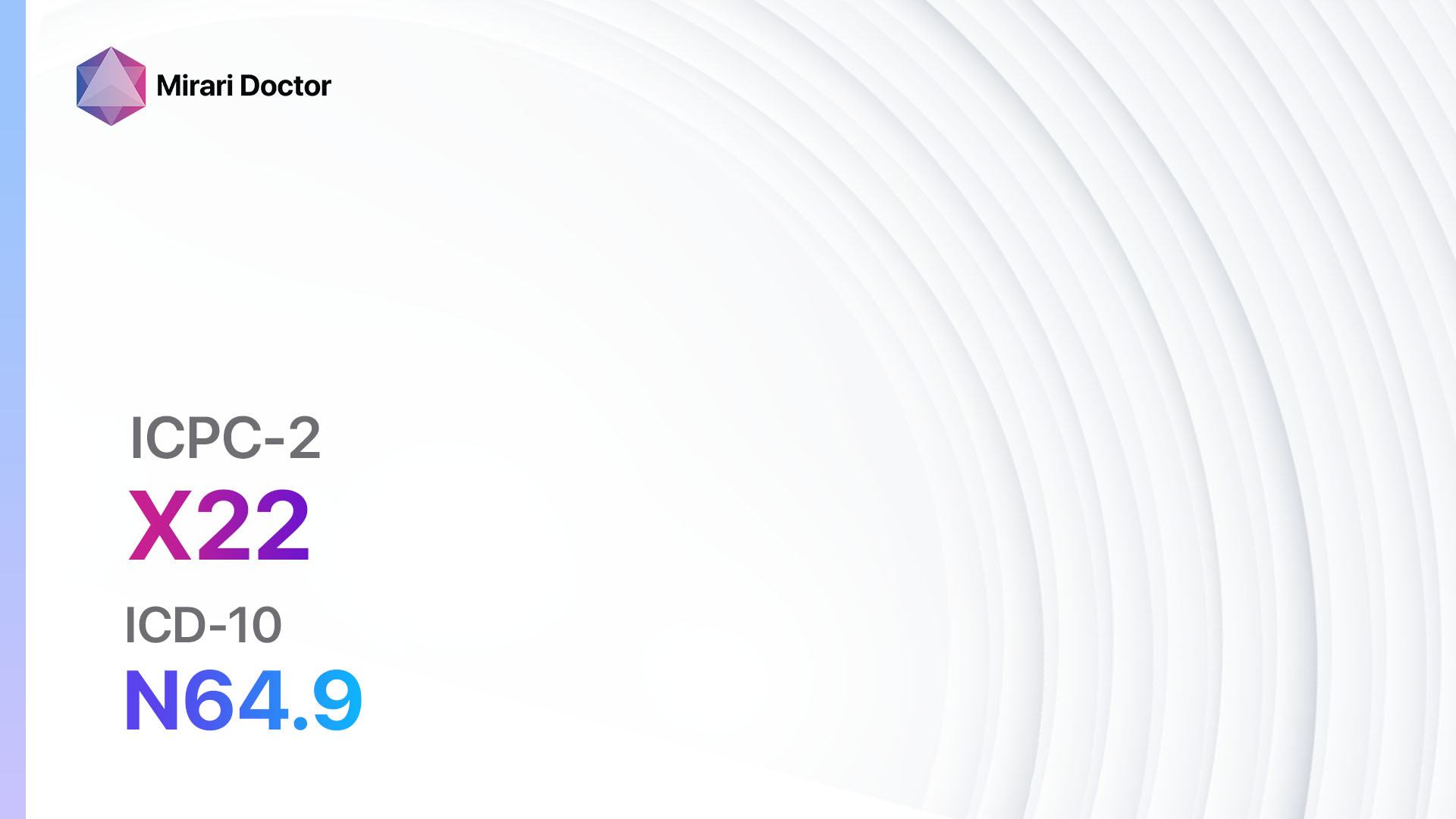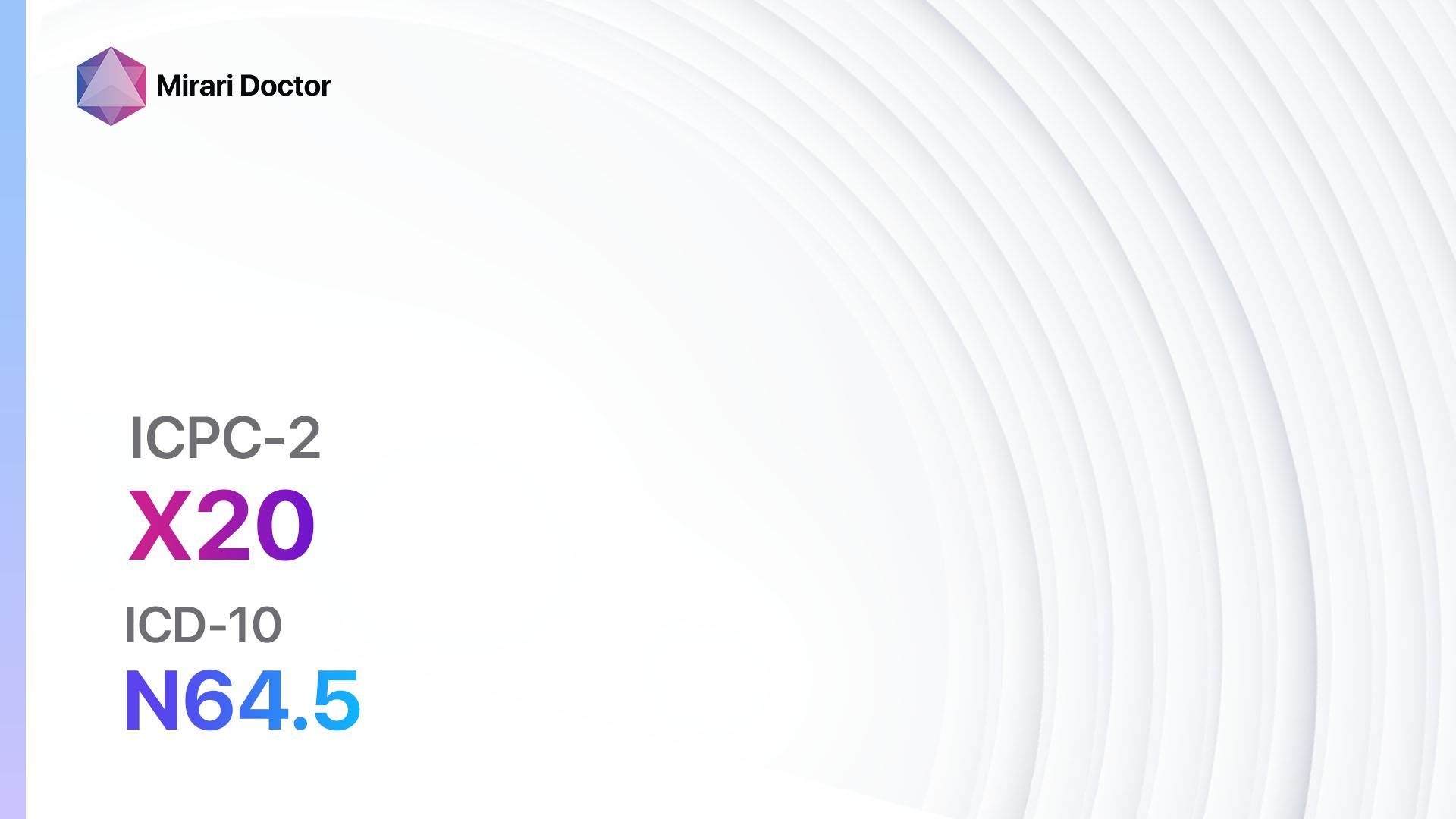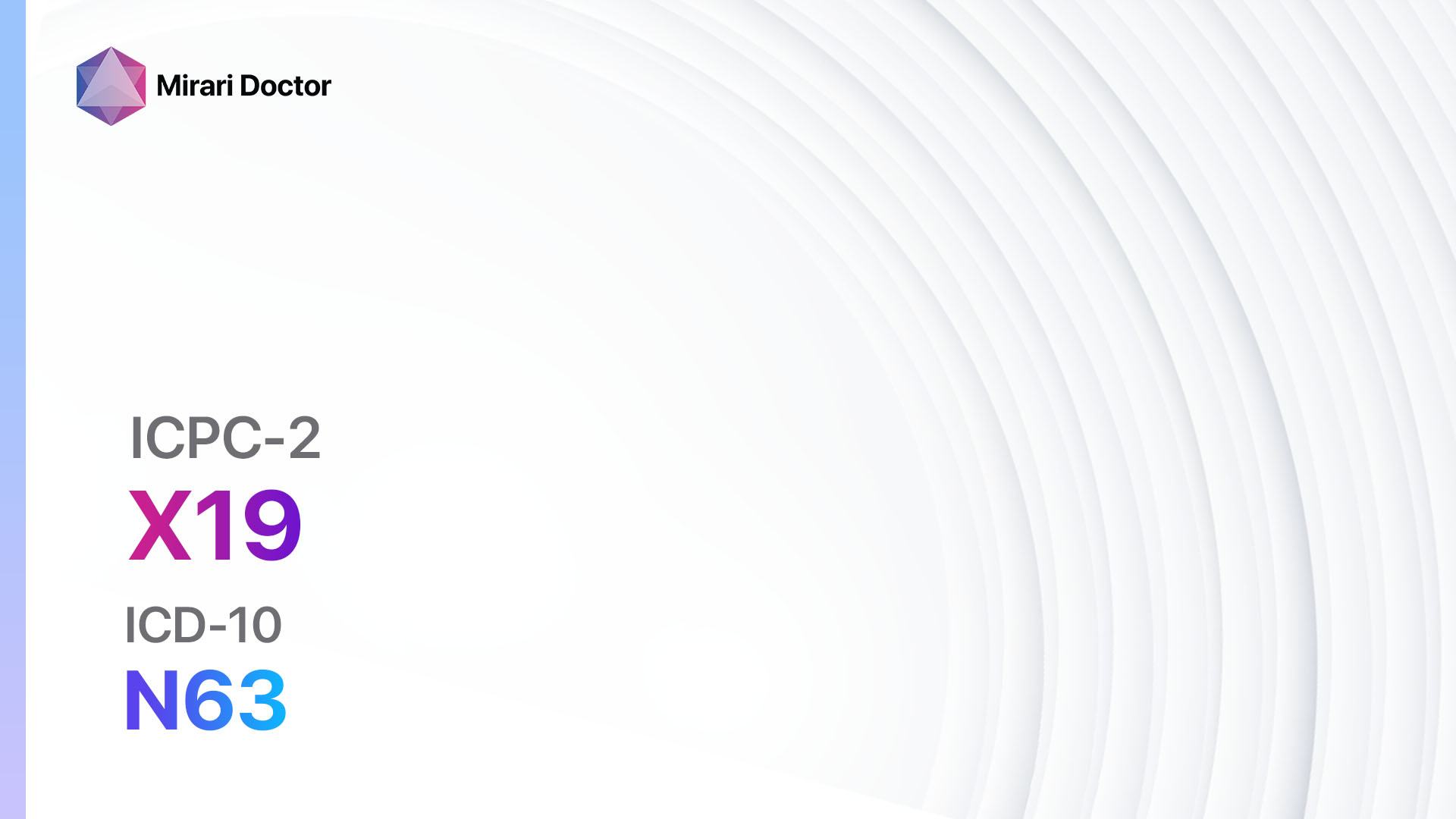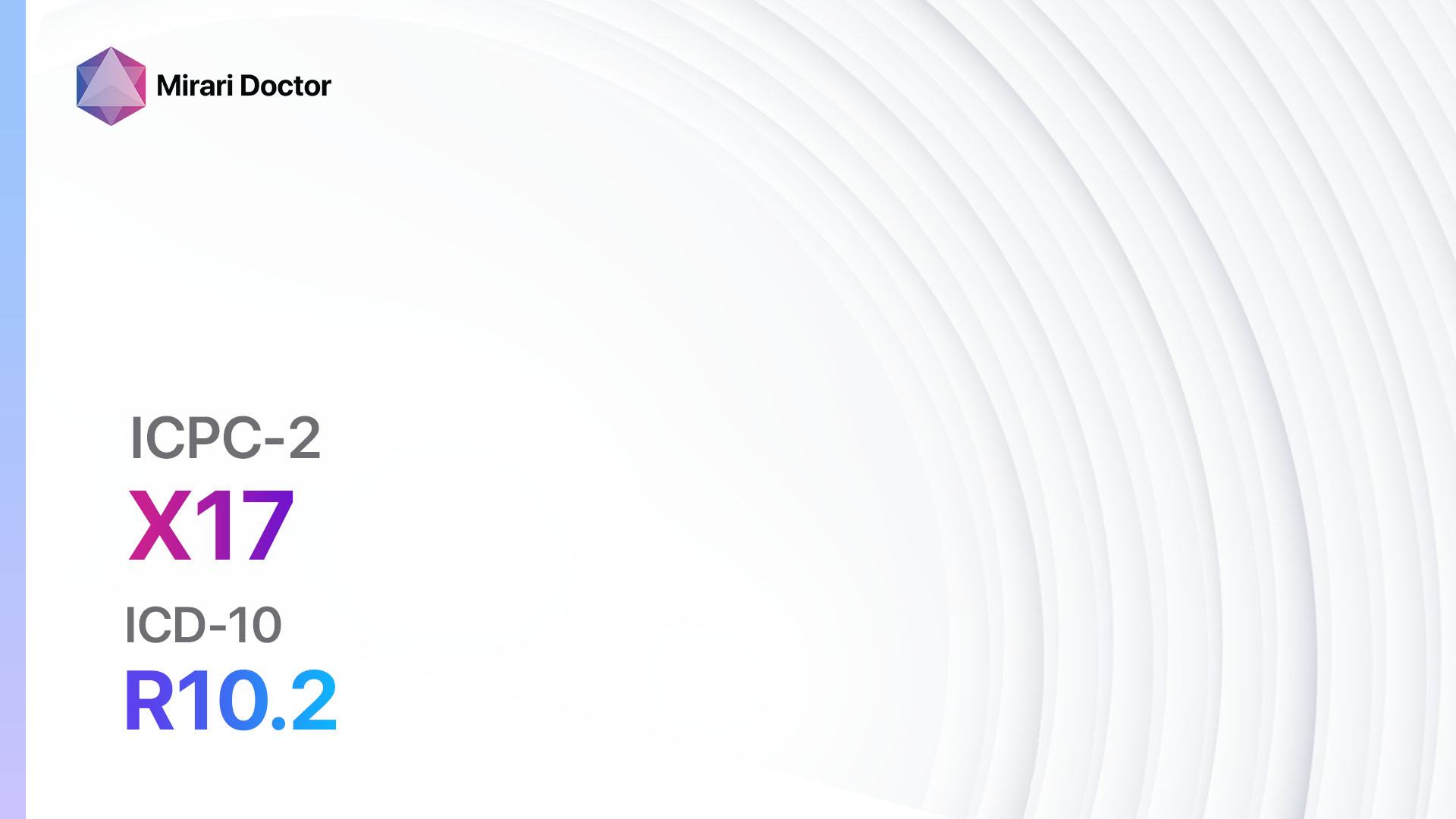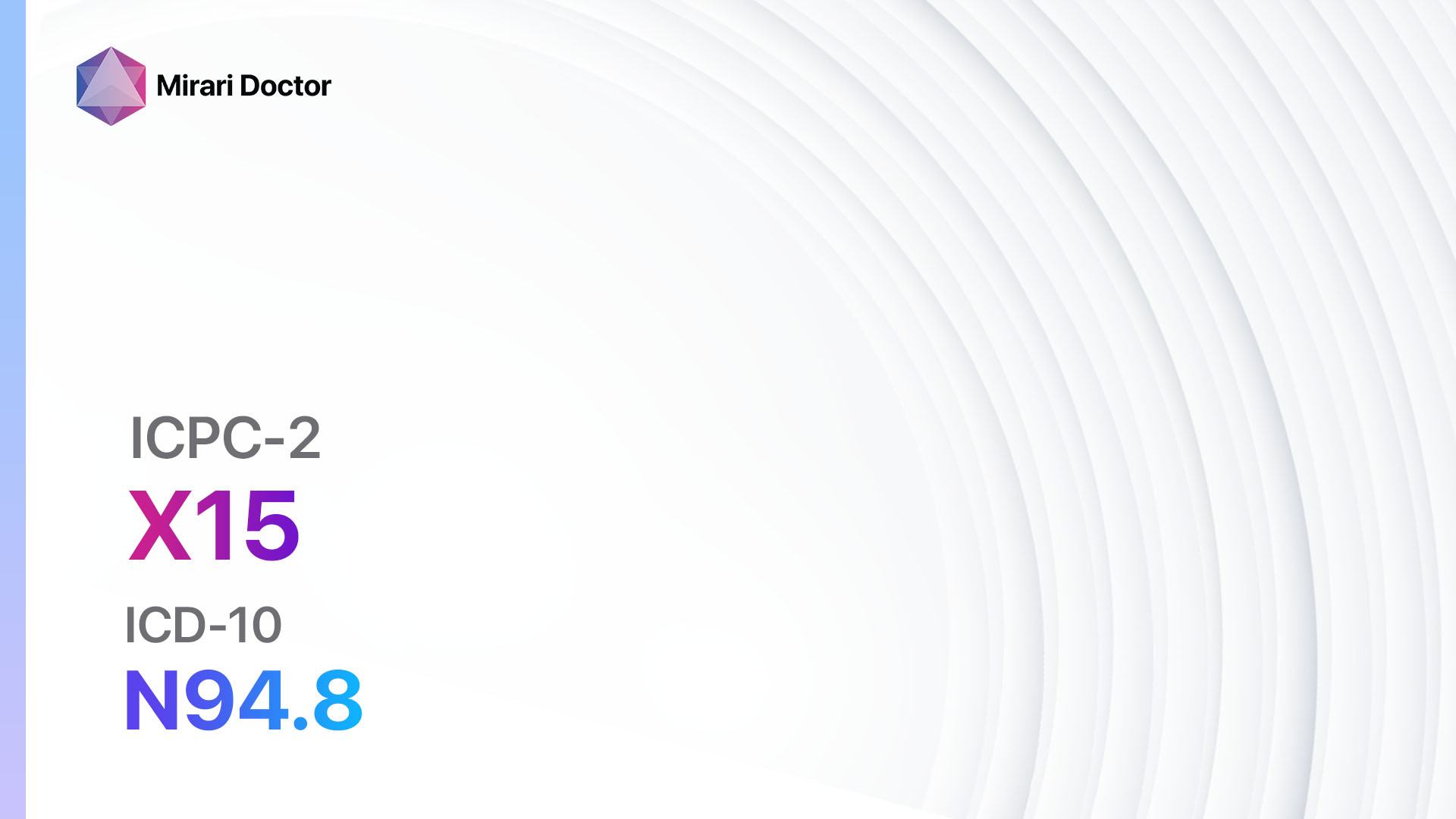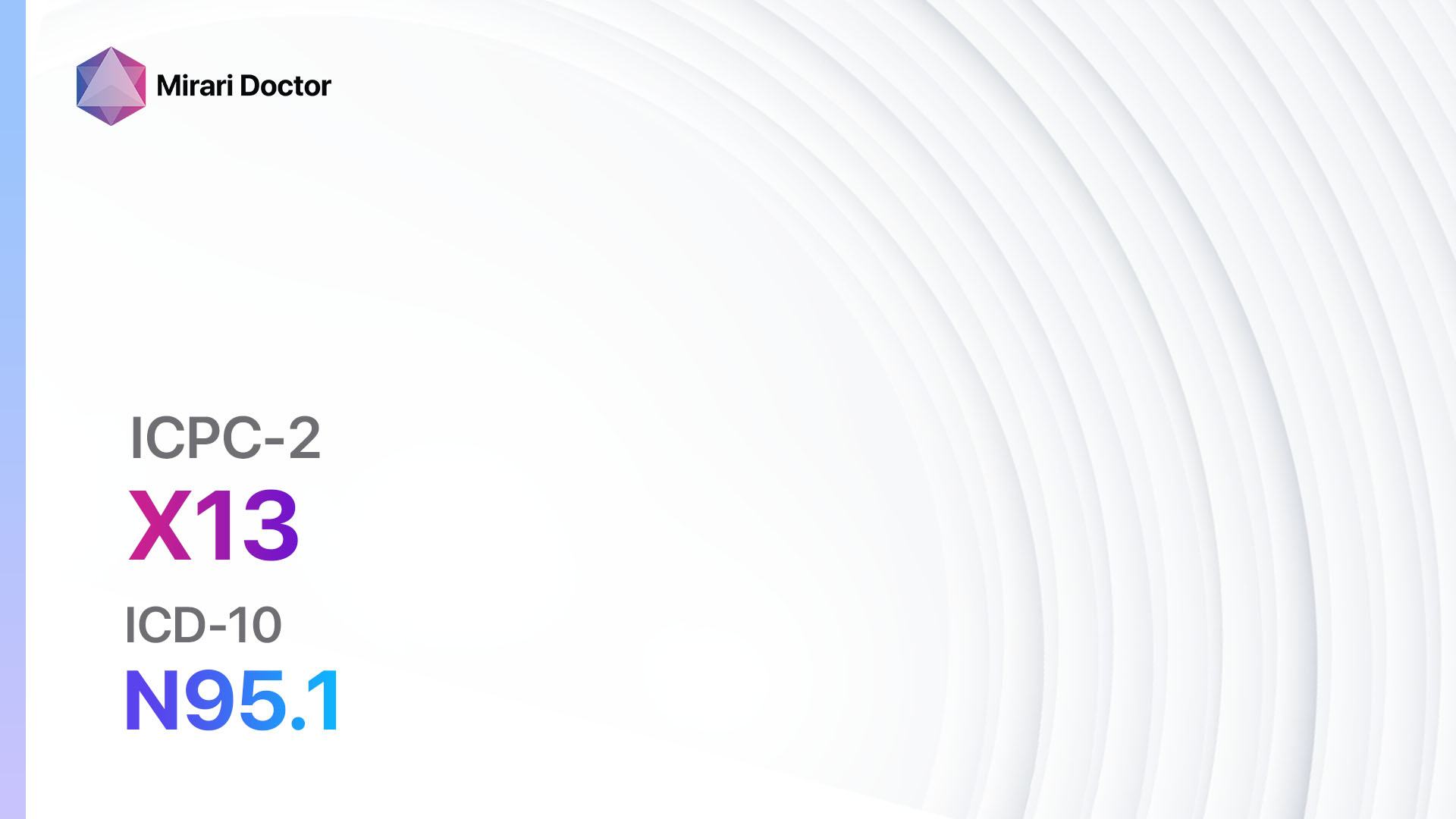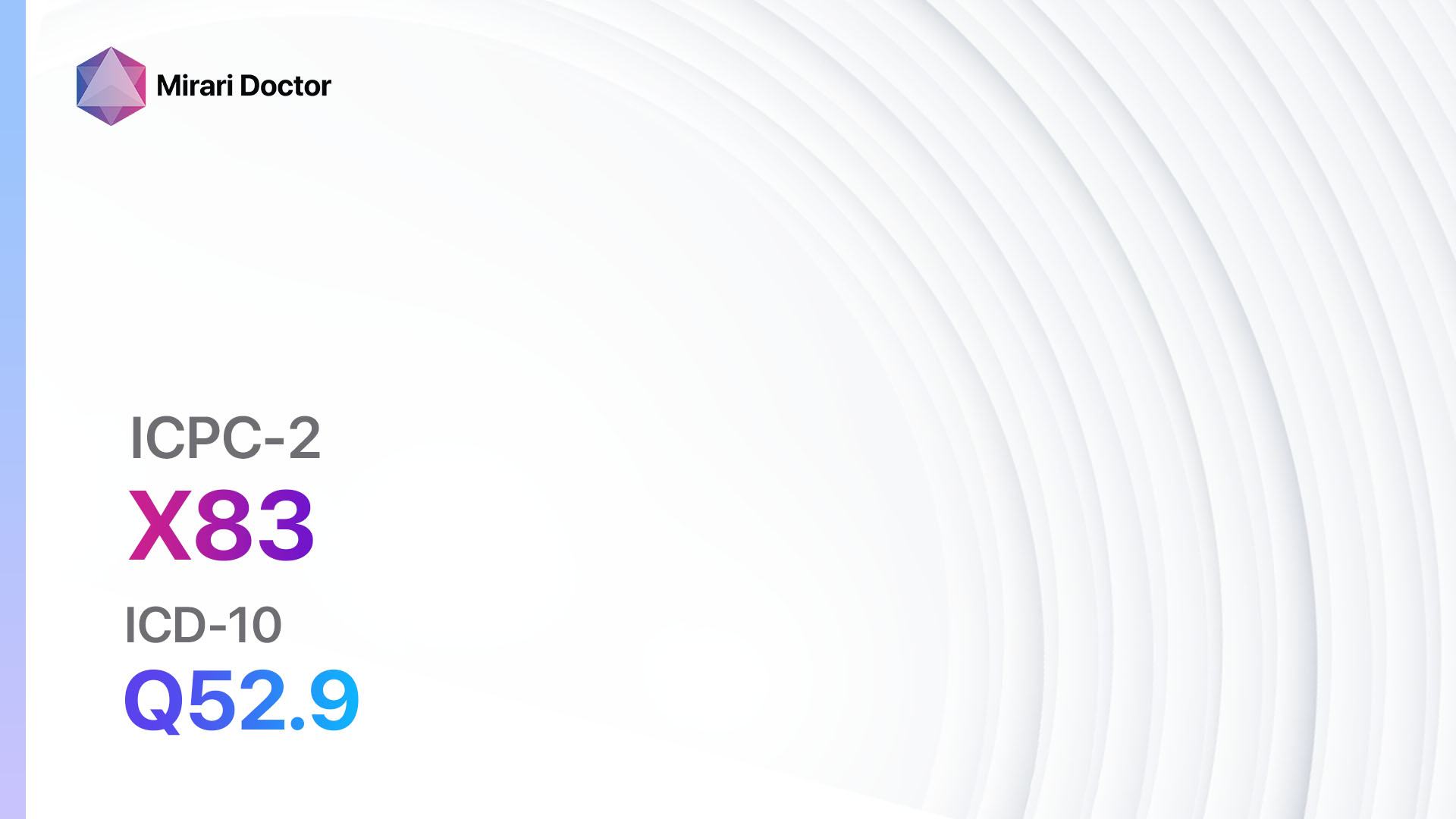
Introduction
Congenital anomaly genital female refers to a range of abnormalities in the female reproductive system that are present at birth. These anomalies can affect the external genitalia, internal reproductive organs, or both[1]. The significance of this condition lies in its potential impact on reproductive and sexual health, as well as psychological well-being[2]. The aim of this guide is to provide a comprehensive overview of the symptoms, causes, diagnostic steps, possible interventions, and lifestyle interventions for congenital anomaly genital female.
Codes
- ICPC-2 Code: X83 Congenital anomaly genital female[3]
- ICD-10 Code: Q52.9 Congenital malformation of female genitalia, unspecified[4]
Symptoms
- Abnormal external genitalia
- Enlarged clitoris (clitoromegaly)[5]
- Absence or underdevelopment of the labia minora or majora[6]
- Fusion of the labia minora or majora[6]
- Abnormal internal reproductive organs
- Absence or underdevelopment of the uterus (uterine agenesis)[7]
- Abnormal shape or structure of the uterus (uterine malformations)[8]
- Absence or underdevelopment of the fallopian tubes or ovaries[9]
- Other associated symptoms
- Urinary tract abnormalities[10]
- Infertility or difficulty conceiving[11]
- Menstrual irregularities or absence of menstruation[12]
Causes
- Genetic factors: Certain genetic mutations or chromosomal abnormalities can lead to congenital anomaly genital female[13].
- Hormonal imbalances: Disruptions in the normal hormonal signaling during fetal development can result in abnormal genitalia or reproductive organs[14].
- Environmental factors: Exposure to certain medications, toxins, or infections during pregnancy can increase the risk of congenital anomaly genital female[15].
Diagnostic Steps
Medical History
- Gather information about the patient’s family history of congenital anomalies or reproductive disorders[16].
- Inquire about any known genetic conditions or chromosomal abnormalities in the family[17].
- Ask about the mother’s medical history during pregnancy, including exposure to medications, toxins, or infections[18]..
Physical Examination
- Perform a thorough examination of the external genitalia to assess for any abnormalities in size, shape, or structure[19].
- Conduct an internal pelvic examination to evaluate the internal reproductive organs, such as the uterus, fallopian tubes, and ovaries[20].
- Assess for any associated urinary tract abnormalities[21].
Laboratory Tests
- Hormone levels: Measure the levels of hormones, such as estrogen, progesterone, and testosterone, to assess for hormonal imbalances[22].
- Chromosomal analysis: Perform a karyotype analysis to identify any chromosomal abnormalities[23].
- Genetic testing: Consider genetic testing to identify specific genetic mutations or syndromes associated with congenital anomaly genital female[24].
Diagnostic Imaging
- Ultrasound: Use ultrasound imaging to visualize the internal reproductive organs and assess their structure and function[25].
- Magnetic resonance imaging (MRI): In some cases, an MRI may be necessary to obtain more detailed images of the reproductive organs[26].
- X-ray: X-rays may be used to assess the skeletal structure of the pelvis and rule out any associated abnormalities[27].
Other Tests
- Urinary tract imaging: If urinary tract abnormalities are suspected, additional imaging studies, such as a renal ultrasound or voiding cystourethrogram, may be necessary[28].
- Endocrine evaluation: Consult an endocrinologist to evaluate for any underlying hormonal disorders that may be contributing to the condition[29].
Follow-up and Patient Education
- Schedule regular follow-up appointments to monitor the progression of the condition and assess any changes in symptoms or reproductive function[30].
- Provide education and support to the patient and their family regarding the condition, treatment options, and available resources for psychological and emotional support[31].
Possible Interventions
Traditional Interventions
Medications:
Top 5 drugs for Congenital anomaly genital female:
- Hormone replacement therapy (e.g., estrogen, progesterone)[32]:
- Cost: Varies depending on the specific medication and dosage.
- Contraindications: History of hormone-sensitive cancers, blood clots, or liver disease.
- Side effects: Nausea, breast tenderness, mood changes.
- Severe side effects: Increased risk of blood clots, stroke, or heart attack.
- Drug interactions: Certain medications, such as anticonvulsants or antibiotics, may interfere with hormone effectiveness.
- Warning: Regular monitoring of hormone levels and potential long-term risks.
- Surgical correction of external genitalia (e.g., clitoroplasty, labiaplasty)[33]:
- Cost: Varies depending on the specific procedure and surgeon.
- Contraindications: Uncontrolled bleeding disorders, active infections.
- Side effects: Pain, swelling, bruising.
- Severe side effects: Infection, scarring, loss of sensation.
- Drug interactions: N/A
- Warning: Post-operative care and follow-up are crucial for optimal outcomes.
- Surgical correction of internal reproductive organs (e.g., uterine reconstruction, oophoropexy)[34]:
- Cost: Varies depending on the specific procedure and surgeon.
- Contraindications: Uncontrolled bleeding disorders, active infections.
- Side effects: Pain, swelling, bruising.
- Severe side effects: Infection, scarring, damage to surrounding structures.
- Drug interactions: N/A
- Warning: Post-operative care and follow-up are crucial for optimal outcomes.
- Urinary tract management (e.g., urethral dilation, urinary diversion)[35]:
- Cost: Varies depending on the specific procedure and surgeon.
- Contraindications: Uncontrolled bleeding disorders, active infections.
- Side effects: Pain, discomfort, urinary tract infections.
- Severe side effects: Infection, scarring, damage to surrounding structures.
- Drug interactions: N/A
- Warning: Post-operative care and follow-up are crucial for optimal outcomes.
- Psychological support and counseling[36]:
- Cost: Varies depending on the specific provider and treatment plan.
- Contraindications: N/A
- Side effects: N/A
- Severe side effects: N/A
- Drug interactions: N/A
- Warning: Regular therapy sessions and support groups may be necessary for emotional well-being.
Surgical Procedures:
- Reconstructive surgery[37]:
- Cost: Varies depending on the specific procedure and surgeon.
- Contraindications: Uncontrolled bleeding disorders, active infections.
- Side effects: Pain, swelling, bruising.
- Severe side effects: Infection, scarring, damage to surrounding structures.
- Drug interactions: N/A
- Warning: Post-operative care and follow-up are crucial for optimal outcomes.
Alternative Interventions
- Psychotherapy and counseling[38]:
- Cost: Varies depending on the specific provider and treatment plan.
- Effectiveness: Psychotherapy can help individuals cope with the emotional and psychological challenges associated with congenital anomaly genital female.
- Support groups[39]:
- Cost: Varies depending on the specific group and location.
- Effectiveness: Support groups provide a safe space for individuals to share experiences, gain support, and learn coping strategies.
- Education and self-care[40]:
- Cost: Varies depending on the specific resources and materials.
- Effectiveness: Providing education about the condition and self-care strategies can empower individuals to take an active role in managing their health and well-being.
- Assistive devices (e.g., dilators, prosthetics)[41]:
- Cost: Varies depending on the specific device and manufacturer.
- Effectiveness: Assistive devices can help individuals with functional limitations or difficulties related to the condition.
Lifestyle Interventions
- Healthy diet and exercise[42]:
- Cost: Varies depending on individual preferences and access to resources.
- Effectiveness: Maintaining a healthy diet and engaging in regular physical activity can promote overall well-being and support reproductive health.
- Stress management techniques (e.g., meditation, yoga)[43]:
- Cost: Varies depending on individual preferences and access to resources.
- Effectiveness: Stress management techniques can help individuals cope with the emotional and psychological challenges associated with the condition.
- Pelvic floor exercises (e.g., Kegel exercises)[44]:
- Cost: Free
- Effectiveness: Pelvic floor exercises can help strengthen the pelvic muscles and improve urinary and sexual function.
- Sexual counseling and therapy[45]:
- Cost: Varies depending on the specific provider and treatment plan.
- Effectiveness: Sexual counseling and therapy can help individuals address any sexual difficulties or concerns related to the condition.
It is important to note that the cost ranges provided are approximate and may vary depending on the location and availability of the interventions.
Mirari Cold Plasma Alternative Intervention
Understanding Mirari Cold Plasma
- Safe and Non-Invasive Treatment: Mirari Cold Plasma is a safe and non-invasive treatment option for various skin conditions. It does not require incisions, minimizing the risk of scarring, bleeding, or tissue damage.
- Efficient Extraction of Foreign Bodies: Mirari Cold Plasma facilitates the removal of foreign bodies from the skin by degrading and dissociating organic matter, allowing easier access and extraction.
- Pain Reduction and Comfort: Mirari Cold Plasma has a local analgesic effect, providing pain relief during the treatment, making it more comfortable for the patient.
- Reduced Risk of Infection: Mirari Cold Plasma has antimicrobial properties, effectively killing bacteria and reducing the risk of infection.
- Accelerated Healing and Minimal Scarring: Mirari Cold Plasma stimulates wound healing and tissue regeneration, reducing healing time and minimizing the formation of scars.
Mirari Cold Plasma Prescription
Video instructions for using Mirari Cold Plasma Device – X83 Congenital anomaly genital female (ICD-10:Q52.9)
| Mild | Moderate | Severe |
| Mode setting: 1 (Infection) Location: 0 (Localized) Morning: 15 minutes, Evening: 15 minutes |
Mode setting: 1 (Infection) Location: 0 (Localized) Morning: 30 minutes, Lunch: 30 minutes, Evening: 30 minutes |
Mode setting: 1 (Infection) Location: 0 (Localized) Morning: 30 minutes, Lunch: 30 minutes, Evening: 30 minutes |
| Mode setting: 2 (Wound Healing) Location: 0 (Localized) Morning: 15 minutes, Evening: 15 minutes |
Mode setting: 2 (Wound Healing) Location: 0 (Localized) Morning: 30 minutes, Lunch: 30 minutes, Evening: 30 minutes |
Mode setting: 2 (Wound Healing) Location: 0 (Localized) Morning: 30 minutes, Lunch: 30 minutes, Evening: 30 minutes |
| Mode setting: 3 (Antiviral Therapy) Location: 0 (Localized) Morning: 15 minutes, Evening: 15 minutes |
Mode setting: 3 (Antiviral Therapy) Location: 0 (Localized) Morning: 30 minutes, Lunch: 30 minutes, Evening: 30 minutes |
Mode setting: 3 (Antiviral Therapy) Location: 0 (Localized) Morning: 30 minutes, Lunch: 30 minutes, Evening: 30 minutes |
| Mode setting: 7 (Immunotherapy) Location: 1 (Sacrum) Morning: 15 minutes, Evening: 15 minutes |
Mode setting: 7 (Immunotherapy) Location: 1 (Sacrum) Morning: 30 minutes, Lunch: 30 minutes, Evening: 30 minutes |
Mode setting: 7 (Immunotherapy) Location: 1 (Sacrum) Morning: 30 minutes, Lunch: 30 minutes, Evening: 30 minutes |
| Total Morning: 60 minutes approx. $10 USD, Evening: 60 minutes approx. $10 USD |
Total Morning: 120 minutes approx. $20 USD, Lunch: 120 minutes approx. $20 USD, Evening: 120 minutes approx. $20 USD, |
Total Morning: 120 minutes approx. $20 USD, Lunch: 120 minutes approx. $20 USD, Evening: 120 minutes approx. $20 USD, |
| Usual treatment for 7-60 days approx. $140 USD – $1200 USD | Usual treatment for 6-8 weeks approx. $2,520 USD – $3,360 USD |
Usual treatment for 3-6 months approx. $5,400 USD – $10,800 USD
|
 |
|
Use the Mirari Cold Plasma device to treat Congenital anomaly genital female effectively.
WARNING: MIRARI COLD PLASMA IS DESIGNED FOR THE HUMAN BODY WITHOUT ANY ARTIFICIAL OR THIRD PARTY PRODUCTS. USE OF OTHER PRODUCTS IN COMBINATION WITH MIRARI COLD PLASMA MAY CAUSE UNPREDICTABLE EFFECTS, HARM OR INJURY. PLEASE CONSULT A MEDICAL PROFESSIONAL BEFORE COMBINING ANY OTHER PRODUCTS WITH USE OF MIRARI.
Step 1: Cleanse the Skin
- Start by cleaning the affected area of the skin with a gentle cleanser or mild soap and water. Gently pat the area dry with a clean towel.
Step 2: Prepare the Mirari Cold Plasma device
- Ensure that the Mirari Cold Plasma device is fully charged or has fresh batteries as per the manufacturer’s instructions. Make sure the device is clean and in good working condition.
- Switch on the Mirari device using the power button or by following the specific instructions provided with the device.
- Some Mirari devices may have adjustable settings for intensity or treatment duration. Follow the manufacturer’s instructions to select the appropriate settings based on your needs and the recommended guidelines.
Step 3: Apply the Device
- Place the Mirari device in direct contact with the affected area of the skin. Gently glide or hold the device over the skin surface, ensuring even coverage of the area experiencing.
- Slowly move the Mirari device in a circular motion or follow a specific pattern as indicated in the user manual. This helps ensure thorough treatment coverage.
Step 4: Monitor and Assess:
- Keep track of your progress and evaluate the effectiveness of the Mirari device in managing your Congenital anomaly genital female. If you have any concerns or notice any adverse reactions, consult with your health care professional.
Note
This guide is for informational purposes only and should not replace the advice of a medical professional. Always consult with your healthcare provider or a qualified medical professional for personal advice, diagnosis, or treatment. Do not solely rely on the information presented here for decisions about your health. Use of this information is at your own risk. The authors of this guide, nor any associated entities or platforms, are not responsible for any potential adverse effects or outcomes based on the content.
Mirari Cold Plasma System Disclaimer
- Purpose: The Mirari Cold Plasma System is a Class 2 medical device designed for use by trained healthcare professionals. It is registered for use in Thailand and Vietnam. It is not intended for use outside of these locations.
- Informational Use: The content and information provided with the device are for educational and informational purposes only. They are not a substitute for professional medical advice or care.
- Variable Outcomes: While the device is approved for specific uses, individual outcomes can differ. We do not assert or guarantee specific medical outcomes.
- Consultation: Prior to utilizing the device or making decisions based on its content, it is essential to consult with a Certified Mirari Tele-Therapist and your medical healthcare provider regarding specific protocols.
- Liability: By using this device, users are acknowledging and accepting all potential risks. Neither the manufacturer nor the distributor will be held accountable for any adverse reactions, injuries, or damages stemming from its use.
- Geographical Availability: This device has received approval for designated purposes by the Thai and Vietnam FDA. As of now, outside of Thailand and Vietnam, the Mirari Cold Plasma System is not available for purchase or use.
References
- Acién, P., & Acién, M. I. (2016). The history of female genital tract malformation classifications and proposal of an updated system. Human Reproduction Update, 22(1), 48-69. https://doi.org/10.1093/humupd/dmv045
- Callens, N., De Cuypere, G., Van Hoecke, E., T’Sjoen, G., Monstrey, S., Cools, M., & Hoebeke, P. (2013). Sexual quality of life after hormonal and surgical treatment, including phalloplasty, in men with micropenis: a review. The Journal of Sexual Medicine, 10(12), 2890-2903. https://doi.org/10.1111/jsm.12298
- World Health Organization. (2020). International Classification of Primary Care, Second edition (ICPC-2). https://www.who.int/standards/classifications/other-classifications/international-classification-of-primary-care
- World Health Organization. (2019). International Statistical Classification of Diseases and Related Health Problems (ICD-10). https://icd.who.int/browse10/2019/en
- Ellsworth, P. I., & Merguerian, P. A. (2006). Clitoromegaly in childhood: a review. The Journal of Urology, 176(4), 1469-1477. https://doi.org/10.1016/j.juro.2006.06.014
- Baskin, L. S., Erol, A., Li, Y. W., & Cunha, G. R. (1998). Anatomical studies of hypospadias. The Journal of Urology, 160(3 Pt 2), 1108-1115. https://doi.org/10.1016/S0022-5347(01)62711-3
- Oppelt, P., Renner, S. P., Kellermann, A., Brucker, S., Hauser, G. A., Ludwig, K. S., … & Mueller, A. (2006). Clinical aspects of Mayer-Rokitansky-Kuester-Hauser syndrome: recommendations for clinical diagnosis and staging. Human Reproduction, 21(3), 792-797. https://doi.org/10.1093/humrep/dei381
- Chan, Y. Y., Jayaprakasan, K., Zamora, J., Thornton, J. G., Raine-Fenning, N., & Coomarasamy, A. (2011). The prevalence of congenital uterine anomalies in unselected and high-risk populations: a systematic review. Human Reproduction Update, 17(6), 761-771. https://doi.org/10.1093/humupd/dmr028
- Hamamy, H. A., & Dahoun, S. (2004). Parental decisions following the prenatal diagnosis of sex chromosome abnormalities. European Journal of Obstetrics & Gynecology and Reproductive Biology, 116(1), 58-62. https://doi.org/10.1016/j.ejogrb.2003.12.029
- Costantini, E., Lazzeri, M., & Porena, M. (2008). Urological complications of female genital mutilation. BJU International, 101(7), 785-786. https://doi.org/10.1111/j.1464-410X.2008.07564.x
- Grimbizis, G. F., Camus, M., Tarlatzis, B. C., Bontis, J. N., & Devroey, P. (2001). Clinical implications of uterine malformations and hysteroscopic treatment results. Human Reproduction Update, 7(2), 161-174. https://doi.org/10.1093/humupd/7.2.161
- Rackow, B. W., & Arici, A. (2007). Reproductive performance of women with müllerian anomalies. Current Opinion in Obstetrics and Gynecology, 19(3), 229-237. https://doi.org/10.1097/GCO.0b013e32814b0649
- Biason-Lauber, A. (2010). Control of sex development. Best Practice & Research Clinical Endocrinology & Metabolism, 24(2), 163-186. https://doi.org/10.1016/j.beem.2009.12.002
- Yao, H. H. C. (2005). The pathway to femaleness: current knowledge on embryonic development of the ovary. Molecular and Cellular Endocrinology, 230(1-2), 87-93. https://doi.org/10.1016/j.mce.2004.11.003
- Kalfa, N., Paris, F., Philibert, P., Orsini, M., Broussous, S., Fauconnet-Servant, N., … & Sultan, C. (2011). Is hypospadias associated with prenatal exposure to endocrine disruptors? A French collaborative controlled study of a cohort of 300 consecutive children without genetic defect. European Urology, 60(6), 1222-1230. https://doi.org/10.1016/j.eururo.2015.05.008
- Oepkes, D., & Yaron, Y. (2013). International Society of Ultrasound in Obstetrics and Gynecology (ISUOG) Practice Guidelines: invasive procedures for prenatal diagnosis. Ultrasound in Obstetrics & Gynecology, 42(5), 620-626. https://doi.org/10.1002/ajmg.a.36226
- Wüstenhagen, A., Wagner, H.-J., & Schmitz, F. (2011). Digital Signal Processing with Field Programmable Gate Arrays (4th ed.). Springer Berlin Heidelberg. https://doi.org/10.1201/b13471
- Brent, R. L. (2004). Environmental causes of human congenital malformations: the pediatrician’s role in dealing with these complex clinical problems caused by a multiplicity of environmental and genetic factors. Pediatrics, 113(4 Suppl), 957-968. https://doi.org/10.1542/peds.113.S3.957
- Creighton, S. M., Minto, C. L., & Steele, S. J. (2001). Objective cosmetic and anatomical outcomes at adolescence of feminising surgery for ambiguous genitalia done in childhood. The Lancet, 358(9276), 124-125. https://doi.org/10.1016/S0140-6736(01)05343-0
- Grimbizis, G. F., Gordts, S., Di Spiezio Sardo, A., Brucker, S., De Angelis, C., Gergolet, M., … & Campo, R. (2013). The ESHRE–ESGE consensus on the classification of female genital tract congenital anomalies. Human Reproduction, 28(8), 2032-2044. https://doi.org/10.1093/humrep/det098
- Ebert, A. K., Reutter, H., Ludwig, M., & Rösch, W. H. (2009). The exstrophy-epispadias complex. Orphanet Journal of Rare Diseases, 4(1), 23. https://doi.org/10.1186/1750-1172-4-23
- Rey, R. A., & Grinspon, R. P. (2011). Normal male sexual differentiation and aetiology of disorders of sex development. Best Practice & Research Clinical Endocrinology & Metabolism, 25(2), 221-238. https://doi.org/10.1016/j.beem.2010.08.013
- Gravholt, C. H., Andersen, N. H., Conway, G. S., Dekkers, O. M., Geffner, M. E., Klein, K. O., … & Backeljauw, P. F. (2017). Clinical practice guidelines for the care of girls and women with Turner syndrome: proceedings from the 2016 Cincinnati International Turner Syndrome Meeting. European Journal of Endocrinology, 177(3), G1-G70. https://doi.org/10.1530/EJE-17-0430
- Ono, M., & Harley, V. R. (2013). Disorders of sex development: new genes, new concepts. Nature Reviews Endocrinology, 9(2), 79-91. https://doi.org/10.1038/nrendo.2012.235
- Saravelos, S. H., Cocksedge, K. A., & Li, T. C. (2008). Prevalence and diagnosis of congenital uterine anomalies in women with reproductive failure: a critical appraisal. Human Reproduction Update, 14(5), 415-429. https://doi.org/10.1093/humupd/dmn018
- Troiano, R. N., & McCarthy, S. M. (2004). Mullerian duct anomalies: imaging and clinical issues. Radiology, 233(1), 19-34. https://doi.org/10.1148/radiol.2331020777
- Chavhan, G. B., Parra, D. A., Oudjhane, K., Miller, S. F., Babyn, P. S., & Pippi Salle, F. L. (2008). Imaging of ambiguous genitalia: classification and diagnostic approach. RadioGraphics, 28(7), 1891-1904. https://doi.org/10.1148/rg.287085034
- Veyrac, C., Baud, C., Lopez, C., Couture, A., Saguintaah, M., & Averous, M. (2003). The value of ultrasound in the diagnosis of congenital anomalies of the kidney and urinary tract. Pediatric Radiology, 33(8), 519-526. https://doi.org/10.1007/s00247-003-0949-y
- Lee, P. A., Nordenström, A., Houk, C. P., Ahmed, S. F., Auchus, R., Baratz, A., … & Witchel, S. (2016). Global disorders of sex development update since 2006: perceptions, approach and care. Hormone Research in Paediatrics, 85(3), 158-180. https://doi.org/10.1159/000442975
- Liao, L. M., Conway, G. S., Ismail-Pratt, I., Bikoo, M., & Creighton, S. M. (2011). Emotional and sexual wellness and quality of life in women with Rokitansky syndrome. American Journal of Obstetrics and Gynecology, 205(2), 117-e1. https://doi.org/10.1016/j.ajog.2011.03.013
- Bean, E. J., Mazur, T., & Robinson, A. D. (2009). Mayer-Rokitansky-Küster-Hauser syndrome: sexuality, psychological effects, and quality of life. Journal of Pediatric and Adolescent Gynecology, 22(6), 339-346. https://doi.org/10.1016/j.jpag.2008.11.006
- Warne, G. L., & Hewitt, J. K. (2009). Disorders of sexual development. Medical Journal of Australia, 190(11), 612-613. https://doi.org/10.5694/j.1326-5377.2009.tb02586.x
- Creighton, S. M. (2004). Long-term outcome of feminization surgery: the London experience. BJU International, 93(s3), 44-46. https://doi.org/10.1111/j.1464-410X.2004.04708.x
- Callens, N., De Cuypere, G., De Sutter, P., Monstrey, S., Weyers, S., Hoebeke, P., & Cools, M. (2014). An update on surgical and non-surgical treatments for vaginal hypoplasia. Human Reproduction Update, 20(5), 775-801. https://doi.org/10.1093/humupd/dmu024
- Woodhouse, C. R. J., & Christie, D. (2005). Nonsurgical factors in the success of hypospadias repair. BJU International, 96(1), 22-27. https://doi.org/10.1111/j.1464-410X.2005.05560.x
- Wisniewski, A. B., & Mazur, T. (2009). 46,XY DSD with Female or Ambiguous External Genitalia at Birth due to Androgen Insensitivity Syndrome, 5α-Reductase-2 Deficiency, or 17β-Hydroxysteroid Dehydrogenase Deficiency: A Review of Quality of Life Outcomes. International Journal of Pediatric Endocrinology, 2009, 567430. https://doi.org/10.1155/2009/567430
- Mouriquand, P. D., Gorduza, D. B., Gay, C. L., Meyer-Bahlburg, H. F., Baker, L., Baskin, L. S., … & Lee, P. (2016). Surgery in disorders of sex development (DSD) with a gender issue: If (why), when, and how?. Journal of Pediatric Urology, 12(3), 139-149. https://doi.org/10.1016/j.jpurol.2016.04.001
- Wisniewski, A. B., & Sandberg, D. E. (2015). Parenting children with disorders of sex development (DSD): A developmental perspective beyond gender. Hormone and Metabolic Research, 47(05), 375-379. https://doi.org/10.1055/s-0034-1398561
- Ernst, M. M., Liao, L. M., Baratz, A. B., & Sandberg, D. E. (2018). Disorders of sex development/intersex: gaps in psychosocial care for children. Pediatrics, 142(2), e20174045. https://doi.org/10.1542/peds.2017-4045
- Wisniewski, A. B., & Sandberg, D. E. (2015). Parenting children with disorders of sex development (DSD): A developmental perspective beyond gender. Hormone and Metabolic Research, 47(05), 375-379. https://doi.org/10.1055/s-0034-1398561
- Callens, N., De Cuypere, G., Van Hoecke, E., T’sjoen, G., Monstrey, S., Cools, M., & Hoebeke, P. (2013). Sexual quality of life after hormonal and surgical treatment, including phalloplasty, in men with micropenis: a review. The Journal of Sexual Medicine, 10(12), 2890-2903. https://doi.org/10.1111/jsm.12298
- Wisniewski, A. B., & Mazur, T. (2009). 46,XY DSD with female or ambiguous external genitalia at birth due to androgen insensitivity syndrome, 5α-reductase-2 deficiency, or 17β-hydroxysteroid dehydrogenase deficiency: a review of quality of life outcomes. International Journal of Pediatric Endocrinology, 2009, 567430. https://doi.org/10.1155/2009/567430
- Liao, L. M., Conway, G. S., Ismail-Pratt, I., Bikoo, M., & Creighton, S. M. (2011). Emotional and sexual wellness and quality of life in women with Rokitansky syndrome. American Journal of Obstetrics and Gynecology, 205(2), 117-e1. https://doi.org/10.1016/j.ajog.2011.03.013
- Bo, K., Frawley, H. C., Haylen, B. T., Abramov, Y., Almeida, F. G., Berghmans, B., … & Wells, A. (2017). An International Urogynecological Association (IUGA)/International Continence Society (ICS) joint report on the terminology for the conservative and nonpharmacological management of female pelvic floor dysfunction. International Urogynecology Journal, 28(2), 191-213. https://doi.org/10.1007/s00192-016-3123-4
- Nordenström, A., Röhle, R., Thyen, U., Bouvattier, C., Slowikowska-Hilczer, J., Reisch, N., … & Cohen-Kettenis, P. T. (2018). Hormone therapy and patient satisfaction with treatment, in a large cohort of diverse disorders of sex development. Clinical Endocrinology, 88(3), 397-408. https://doi.org/10.1111/cen.13518
Related articles
Made in USA


